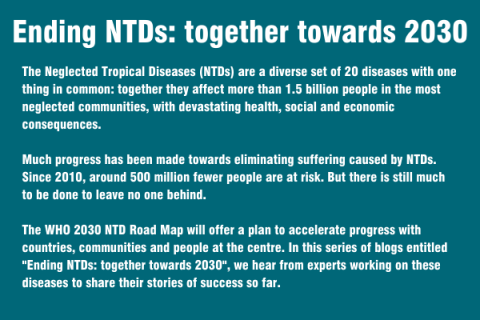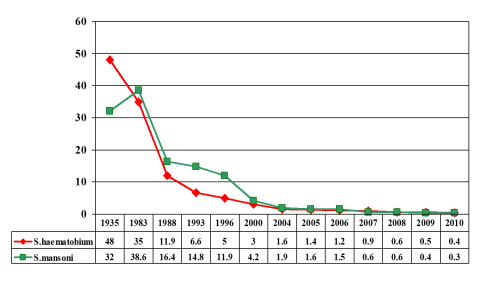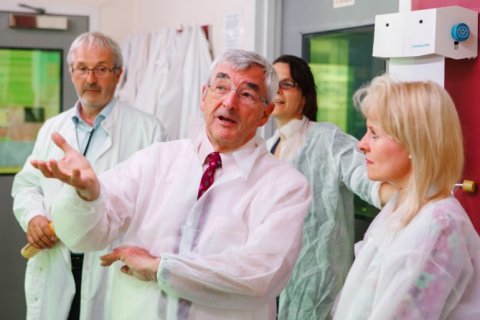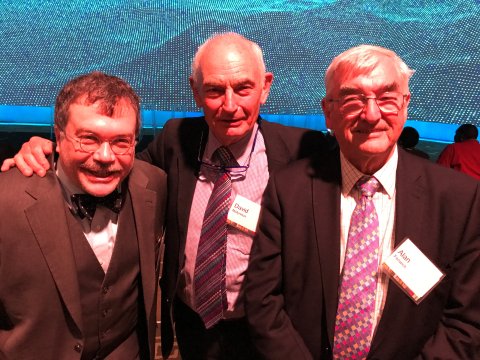NTDs: A 60-year history

It is still not common knowledge in the western world that we are moving closer to the elimination of some of the extremely prevalent Neglected Tropical Diseases (NTDs) that exist around the world.
Indeed, most people in Europe and North America have never even heard of schistosomiasis, hookworm, lymphatic filariasis, onchocerciasis and trachoma. Among the “NTD community”, which is still relatively small, we know that last year, in 2019, over 1 billion treatments were delivered to the poorest people living in endemic areas in Africa, the Indian Sub-Continent, the Western Pacific and in South America.
We also know that the billion doses of medications were all donated free of charge by several pharmaceutical companies and delivered by Ministries of Health and Education in the recipient countries, with funding from two main bilateral donors (the USA and UK) and by numerous philanthropic organisations. One great success has been achieved without medication, and that is the almost-eradication of guinea worm from 3 million infected worldwide to less than 20 in 2019.
But these facts are largely not known by the general public.
Over a period of 20 years, the numbers receiving treatment has risen exponentially, and as a result, the prevalence of blindness, elephantiasis, genital schistosomiasis, ascites, and stunting in children has been reduced dramatically by these treatment programmes, and several diseases are close to elimination in many previously heavily infected places.
So how did this happen?

In the 1960s there were no countrywide treatment programmes in developing countries, there was no school-based deworming nor treatments available for those infected with the parasitic diseases that today are known as the NTDs.
How many people today know of Roy Vagelos, who was CEO of Merck USA (Merck Sharp Dome)? He should be credited with the start of “Mass Drug Administration” (MDA) against NTDs. When he was informed that his company had a product (mectizan) that would control onchocerciasis, he arranged for everyone at risk to be given a dose annually. And that meant 100 million people in 19 countries in West Africa!!!
The impact of this donation was that people at risk of river blindness caused by onchocerciasis would almost immediately cease to suffer from the excruciating itching which the parasite larvae causes, and they would be protected from the blindness which is the longer term consequence of this infection.
Merck’s commitment has now continued for 35 years, and indeed has been expanded to provide mectizan to be used against Lymphatic Filariasis for over 20 years.
Mass drug administrations

The concept of MDA was also applied to other NTDs at the turn of the century, when there was an explosion of activity which included the establishment of treatment of schistosomiasis with praziquantel, intestinal worms with albendazole and mebendazole, trachoma with zithromax, and lymphatic filariasis with a combination of albendazole plus either DEC or mectizan.
The credit for this expansion belongs to the Bill & Melinda Gates Foundation, that awarded grants to the International Trachoma Initiative (ITI), launched by Dr Joe Cook with funding from the Edna McConnell Clark Foundation, to the Schistosomiasis Control Initiative (SCI) that I established in 2002 at Imperial College, and the Global Alliance for the Elimination of Lymphatic Filariasis created in 2000 by a number of collaborators.
These programmes complemented the Mectizan Donation Programme (MDP), and during the period 2000 through 2005, several countries benefited from “Proof of Principle” programmes during which medicines were made available, some donated some purchased, and local Ministries and NGOs delivered the drugs to rural populations infected with or at risk of infection with the parasites.
NTD champions

In 2003 and 2005 the NTD champions, (I would name Dr Anarfi Asamoa-Baah who established the NTD unit at WHO, then David Molyneux, Lorenzo Savioli, Dirk Engels, Peter Hotez, Eric Ottesen, Alan Fenwick, and Joe Cook), the staff at BMGF (David Brandling Bennett), staff from the pharmaceutical companies (Ken Gustavsen, Andy Wright, Mark Bradley, Bill Linn) and champions from endemic African regions (Sam Zaramba, Mamadou Traore, Narcis Kabatereine, and the late Likezo Mubila), all came together to try and consolidate the individual disease control programmes and it was at these two meetings that the title “Neglected Tropical Diseases” was coined.
From these meetings the journal PLOS NTDs was also launched with the initiative of Gavin Yamey. Of course, there are many others who played a part in this start-up period, so apologies to those not named here.
London Declaration to today
From 2006 through 2012 each of these treatment initiatives expanded their work and during the same period funding was made available by the US government (USAID) and the British Government (DFID).
Each of the programmes also started to benefit from philanthropy, first by Legatum and then by other high net worth individuals, and by the recognition of Givewell in USA and Giving What We Can in UK, that treatment of NTDs was the most cost effective way to help the health and quality of life of people in developing countries.
By 2012 when Bill Gates himself launched the London Declaration on NTDs at the Royal College of Physicians in London, the NTD train was well on its way with more donations of medications and extra funding for delivery and monitoring and evaluation, but more than anything else the buy-in of the African Ministries of Health to implement the programmes. So, with the acceptance of the London Declaration in 2012, the control of NTDs moved forward to where it is today.